- After years of delay, the deep-sea mining plans of Canadian firm The Metals Company (TMC) now appear to be progressing as it pursues a controversial new path to securing a license to mine in international waters under U.S. jurisdiction.
- Yet critics and some industry observers question how smoothly TMC’s ambitious plans might unfold, citing the likelihood of litigation and strained relations with global partners over the company’s unconventional path to licensing, among other issues.
- Adding to the critics’ unease are TMC’s connections to other deep-sea mining ventures, both past and present. Figures in these companies have attracted controversy over the years, which Mongabay is exposing in fresh detail.
- TMC, however, has brushed away such concerns. “[W]e stand firmly behind our record of transparency, science-based decision-making, and responsible project development,” the company said in a statement to Mongabay.
This story was supported by the Pulitzer Center’s Ocean Reporting Network, where Elizabeth Claire Alberts is a fellow. It is part one of a three-part investigation into TMC, its investors, partners and business strategies.
Standing behind the lectern at the Nasdaq MarketSite Studio in Times Square, New York City, on Sept. 17, 2021, Gerard Barron slammed his palm down on a button. A bell jangled as a shower of black, white and metallic gold confetti fell from above. Barron and the crowd of people around him, which included the president of the Pacific island nation of Kiribati, Taneti Maamau, and Margo Deiye, then-ambassador of another Pacific nation, Nauru, to the International Seabed Authority, cheered and clapped.
This was the moment The Metals Company (TMC), a Vancouver-based deep-sea mining firm, officially joined the Nasdaq Stock Exchange — and its CEO, Barron, a middle-aged Australian who resembles a surfer in business-casual attire, couldn’t hide his excitement. In a speech, he promised that TMC would aid the world’s transition to a greener future by extracting metal-rich rocks from the seafloor that would help build electric cars and solar-power batteries, and that all this could be done in an environmentally friendly way. “Give us a few years,” Barron said, “and you might be able to buy and drive an electric pickup truck with a battery made from nodules that are processed here in the U.S.A.”
What followed, however, was a period of setbacks. Shortly after its public debut, TMC’s stock price plummeted and remained low for several years. Meanwhile, Barron and TMC’s other executives have been kept busy fending off accusations that the company’s green claims mask an industry that will irreparably damage the marine environment. They’ve also been dealing with regulatory delays at the International Seabed Authority (ISA), the U.N.-affiliated body that governs seabed minerals in international waters and that TMC was planning to apply to for a mining license.
But then TMC got a break: Donald Trump won the 2024 U.S. election, and upon taking office he appointed several advocates of deep-sea mining to key positions. These included Marco Rubio as secretary of state, whom TMC had previously dubbed a “nodule champion,” and Howard Lutnick as secretary of commerce, who championed the need to “harvest” seabed minerals during his confirmation hearing. Just three months into his term, on April 24, 2025, Trump signed an executive order authorizing deep-sea mining, not only in U.S. territorial waters, but also in international waters where U.S. jurisdiction is contested. Days later, on April 29, TMC announced it had already submitted its mining application to the National Oceanic and Atmospheric Administration (NOAA), the U.S. agency overseeing deep-sea mining activities in international waters. Barron has said he expects an answer on it in the very near future.
As this shift unfolded, Barron spoke less about how deep-sea minerals could fuel the green transition. Now he framed the minerals in TMC’s proposed mining areas as a strategic asset for the U.S. — one that could reduce dependence on foreign critical minerals, create around 100,000 jobs, and contribute more than $300 billion annually to the nation’s GDP, as Barron said in a May 14 investor call.
Yet, despite TMC’s business plans appearing to progress, deep-sea mining remains a highly controversial industry, posing both ecological and financial risks, according to critics and industry observers with whom Mongabay spoke. These critics also questioned how smoothly TMC’s ambitious plans might unfold. They cite the high likelihood of litigation and strained relations with global partners over the unconventional path to licensing the company has chosen, not to mention the difficulties of extracting minerals in an economically realistic and environmentally safe way — something TMC has long promised it could achieve. Adding to their unease are TMC’s connections to other deep-sea mining ventures, both past and present — including Nautilus Minerals, Deep Sea Mining Finance (DSMF), and the newly formed American Metal. Individuals in these companies have attracted controversy over the years, which Mongabay is exposing in fresh detail.
TMC declined to respond specifically to any of Mongabay’s questions about the claims presented in this investigation. “While we won’t be answering every mischaracterization individually, we stand firmly behind our record of transparency, science-based decision-making, and responsible project development,” it said in a statement sent to Mongabay. “As we’ve said before: we’ll let the science, our partnerships, and our progress speak for themselves.” Read TMC’s full statement here.
This story is part one of a three-part investigation into TMC, its investors, partners and business strategies, conducted by Mongabay with support from the Pulitzer Center.
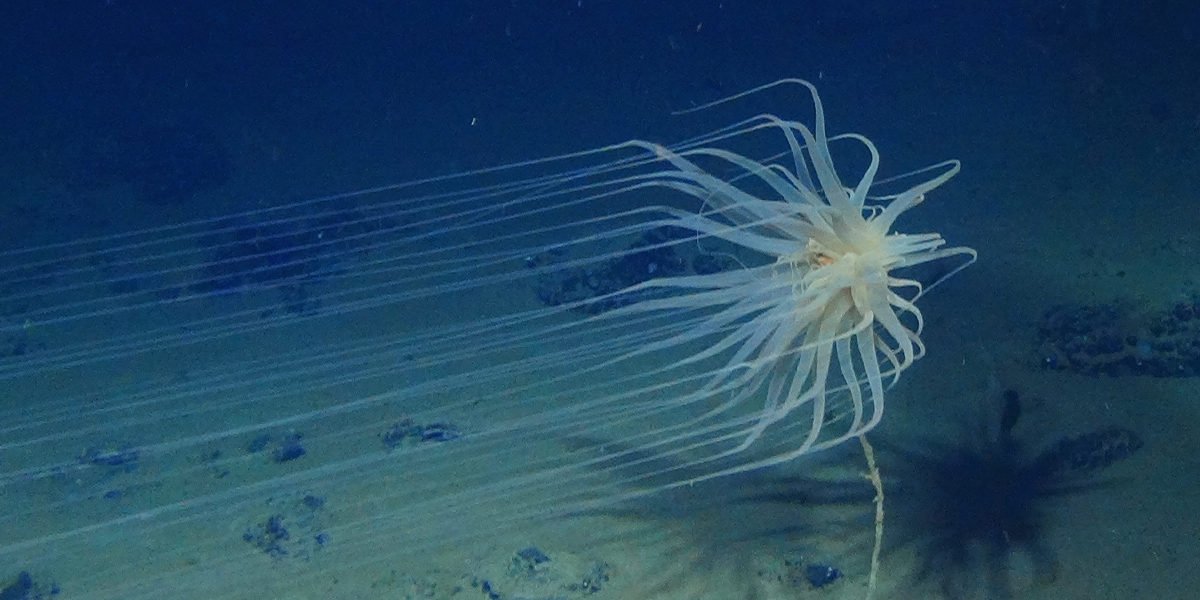
A new industry plunging into the deep
The deep sea refers to the vast portion of ocean below 200 meters (660 feet). It’s a world teeming with diverse life that features dramatic landscapes: canyons, trenches, vent fields, cold seeps, deep-sea coral reefs and abyssal plains. Over time scales spanning thousands to millions of years, parts of the seafloor accumulated high concentrations of minerals and metals through geological upheaval. Hydrothermal vents emit metal-rich fluids, resulting in deposits of copper, gold, silver and zinc, known as seafloor massive sulfide (SMS) deposits. Dissolved metals also accumulate on rock surfaces on the seafloor, forming cobalt-rich ferromanganese crusts. And polymetallic nodules develop when iron and manganese hydroxides aggregate in layers around small particles — like shark teeth or shell fragments — and then accumulate other metals from seawater or sediment.
While deep-sea miners have eyed these various kinds of seabed deposits, TMC is primarily interested in polymetallic nodules. These potato-shaped rocks, replete with commercially valuable metals that include manganese, cobalt, copper and nickel, are found on flat stretches of the seafloor, about 3,500-6,000 m (11,500-19,700 ft) below the ocean’s surface. Barron has long described nodules as a “battery in a rock,” pointing out that each one contains many of the same metals used in the lithium-ion batteries that power electric vehicles today. These same minerals could, in theory, also be used for many other kinds of products, including electronics, medical equipment, aircraft or weaponry.
Nodules occur in many parts of the world’s oceans, including the South Atlantic, the Peru Basin and the Central Indian Ocean. But they’re most abundant in the Clarion-Clipperton Zone (CCZ) of the Pacific Ocean, a 4.5-million-square-kilometer (1.7-million-square-mile) stretch of mostly flat seabed between Mexico and Hawai‘i. The United States Geological Survey (USGS), a government agency that studies the nation’s natural resources, conservatively estimates that there are more than 21 billion dry tons of polymetallic nodules in the region, and that these nodules contain higher concentrations of some metals, such as cobalt, than metal deposits on land.
While a lot of research has focused on polymetallic nodules’ composition and quantity in the CCZ, there’s still much to discover about the region’s biodiversity. In 2023, scientists published a study in Current Biology identifying more than 5,100 metazoan animal species that were completely new to science in areas marked for mining, including a sea cucumber known as a “gummy squirrel” and a ghostly white deep-sea squat lobster. These creatures may lack the charisma of whales, dolphins or sea turtles (which also spend time in the waters of the CCZ ), but scientists say they play a crucial role in marine ecosystems. For instance, microorganisms and fauna in the CCZ are known to break down organic material and recycle nutrients, which contribute to the general health and productivity of marine food webs. Bacteria from deep-sea species also promise cures for superbugs and cancer.
Yet many scientists say deep-sea species, including some known and some yet to be discovered, could be at risk if full-scale mining goes forward, especially the ones that depend upon nodules. For now, commercial seabed mining in international waters has not started anywhere in the world. TMC’s fortunes may depend on changing that soon.
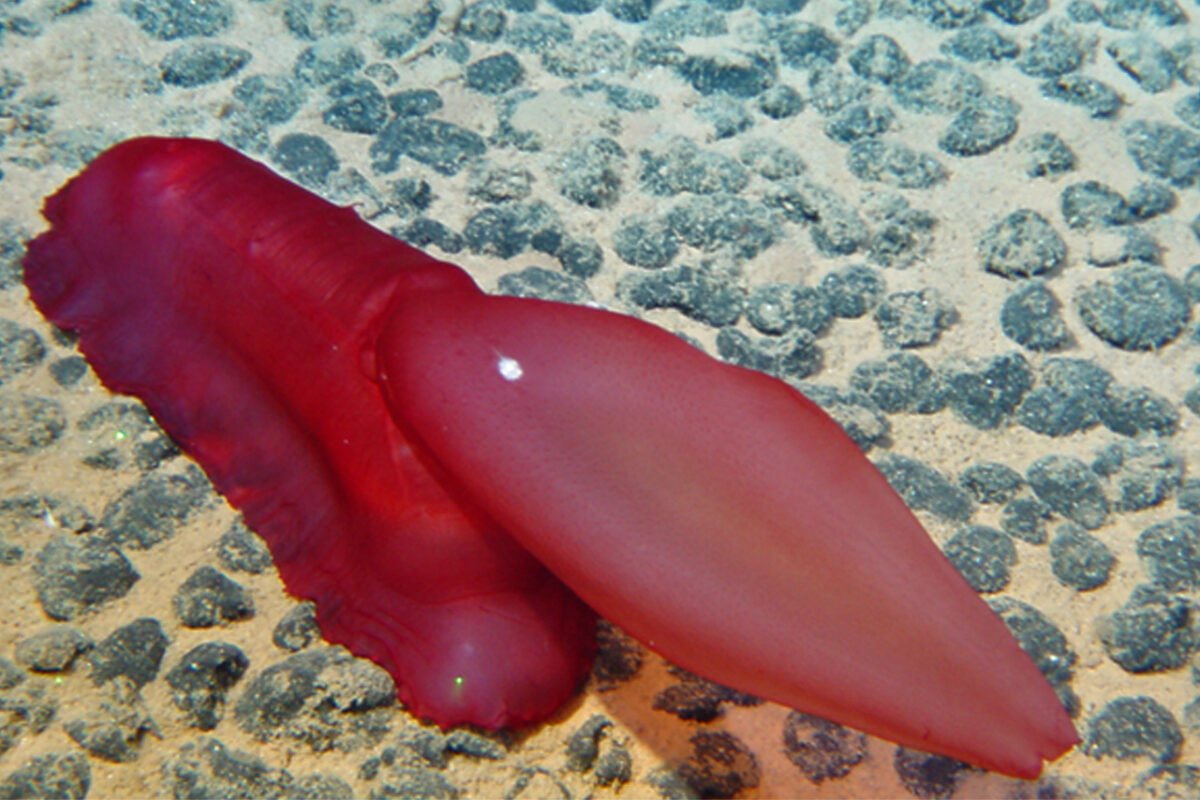
Environmental, logistical and market complications
For years, well before Trump’s executive order, TMC had been pushing to launch the deep-sea mining industry. The company’s efforts thrust it into the spotlight and sparked considerable controversy along the way. To date, 37 countries have called for a moratorium or pause on deep-sea mining until more is known about its potential impacts. Nearly 80 companies have either publicly supported a moratorium or taken steps to distance themselves from the industry. These include major automakers such as Volkswagen, BMW Group and Volvo Group; technology giants like Microsoft, Google, Apple and Samsung; financial institutions such as Credit Suisse, Deutsche Bank and NatWest; and, most recently, the solar energy firm First Solar.
One of the main arguments against deep-sea mining is that too little is known, both about the deep sea itself and the full potential impact of the industry — and that what is known isn’t reassuring. Some studies have found that deep-sea mining could threaten endangered and vulnerable species, and that mining impacts are largely underestimated. Scientists have also raised concerns about the industry’s potential to generate noise pollution and release sediment plumes laden with heavy metals and toxins, which could disrupt midwater communities that provide critical ecosystem services, such as food for commercial fish stocks. And while only a handful of mining tests have actually taken place in international waters, some scientists have expressed concerns about the lack of recovery of deep-sea ecosystems.
A recent study, published in Nature in March, evaluated a former deep-sea mining test site in the CCZ, where a trial took place more than 40 years ago. The researchers found that mining tracks remained clearly visible and biodiversity had generally not recovered — although there were small signs of revival, including recolonization by some small, mobile species. Despite the study’s mixed findings, some proponents of deep-sea mining were quick to highlight this evidence of potential recovery.
Thomas Dahlgren, a marine biologist affiliated with both the University of Gothenburg in Sweden and the Norwegian Research Centre (NORCE), who conducted research during a 2020 cruise funded by TMC’s predecessor, DeepGreen Metals, noted that understanding the full impact of mining is difficult because only a few small-scale tests have been carried out.
“Over the last centuries, there have been a handful of tests — at max, maybe three or four,” Dahlgren told Mongabay. “They may have been run for two or three days on the seafloor, but a full-scale mining operation would be continuous, more or less, over 20 years. So while the scale of the machines they used in their demonstrations have been near full scale, the activity was tested on a very small scale.”
TMC did not respond to Mongabay’s questions about the environmental impacts of deep-sea mining. Instead, TMC provided the general comment that “Over the past 14 years, TMC’s subsidiaries have completed 22 offshore campaigns, built the most comprehensive environmental dataset in the industry, and collaborated with world-leading scientific institutions like MIT, Scripps, the UK’s NOC, and CSIRO. That data has been shared widely and publicly.” TMC did not refer to any specific studies in its response.
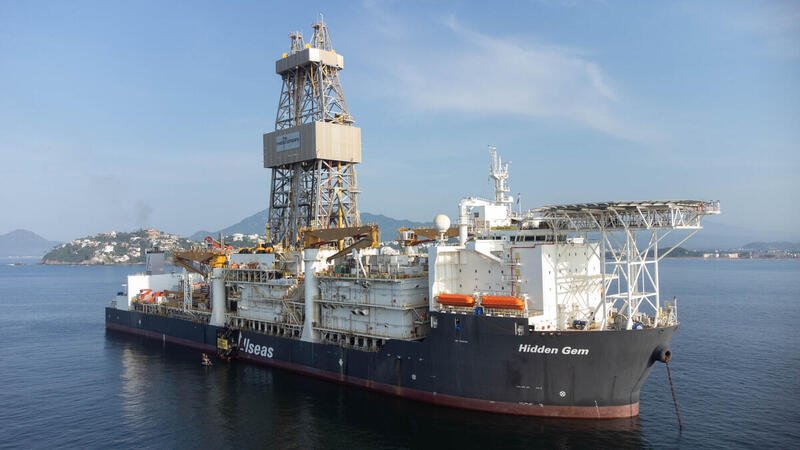
TMC acknowledges on its website that seabed mining activity will cause harm. However, the company argues that seabed mining would “reduce destruction of more biodiverse ecosystems, such as rainforests,” and claims that abyssal plains are the “most common environment on the planet,” with fauna likely found elsewhere — suggesting that the overall impact of its proposed operations would be minimal. It further states that the biggest threat to the ocean is climate change, and, citing research it commissioned, that “sourcing the metals needed for the transition to clean energy from high-grade polymetallic nodules can reduce the associated climate impacts by between 70-80% compared to land-based ores.” TMC’s website also describes measures to reduce and mitigate harm to the marine environment: “The Metals Company’s adaptive management system, a mix of deep-sea ecological data, marine sensors, and cloud-based A.I. … will enable us to monitor what’s happening in real time … With this information, we will be able to adapt, pause, and change our operations to stay within expected ecological thresholds and inform all stakeholders of our impacts at any point, from anywhere in the world.”
While the debate over deep-sea mining often focuses on its environmental impact, U.S.-based deep-sea explorer and private equity investor Victor Vescovo said this focus overshadows other equally critical concerns — namely, the technical and financial challenges that undermine the viability of deep-sea mining.
For one thing, Vescovo, who helped design and build a submersible to explore the deep ocean, and has ventured 15 times to Challenger Deep, the deepest known point of the seabed, said operating heavy machinery in the deep sea is very tricky and that a multitude of things can go wrong. Equipment can get stuck on the seafloor or corroded by seawater, or the riser system might malfunction while transporting ore to the surface. He added that TMC has tested its equipment only once and has incorporated unrealistic assumptions about its mining capabilities into its financial models. TMC did not respond to Mongabay’s questions about these claims.
“I’ve operated a lot in the deep ocean, especially in 4,000-5,000 meters [13,100-16,400 ft], where these guys are going to operate,” Vescovo told Mongabay. He emphasized the scale and complexity of what TMC is proposing to do: “They’re going to put down massive multi-ton machinery that’s rotating in freezing cold waters at roughly 4,000 pounds per square inch” — nearly 300 times atmospheric pressure at sea level — “completely away from any type of maintenance on the surface. And they’re going to use it 24/7 to collect these nodules.”
Vescovo, who said he invests in oil and gas as well as asteroid mining ventures, but not in deep-sea mining, pointed out that battery technology is also rapidly evolving, moving away from lithium-ion batteries to lithium iron phosphate batteries, which don’t need metals from polymetallic nodules. Lithium iron phosphate batteries are being used in a range of applications, including electric cars, energy storage and solar energy systems. And while the cobalt, copper, manganese and nickel found in polymetallic nodules are essential for military applications such as aircraft, missiles and tanks, some markets for these minerals are in oversupply.
On the other hand, some experts have highlighted the risk of critical mineral shortages, especially if geopolitical tensions continue to rise. The USGS defines critical minerals as those vital to U.S. economic or national security interests, with vulnerable supply chains and essential roles in key manufacturing — and classifies most of the metals in nodules as such, with the exception of copper.
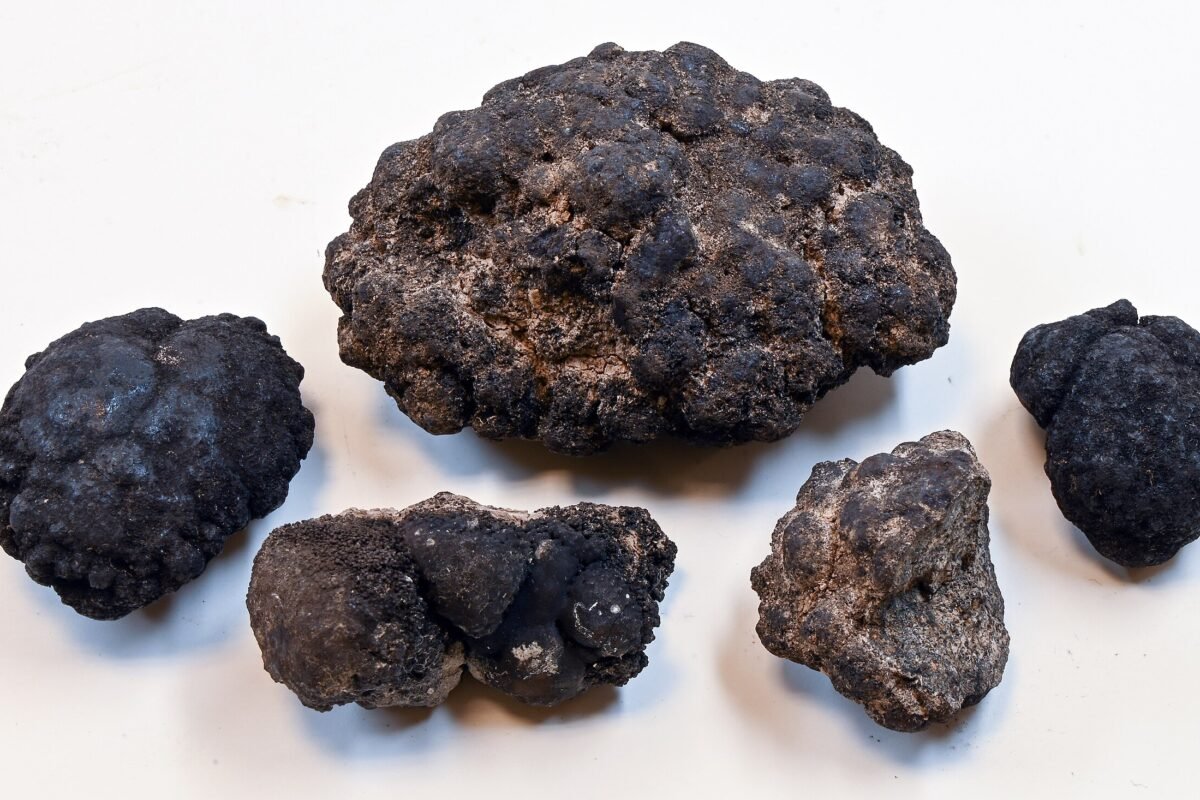
Demand is only part of the equation. The processing and refining of polymetallic nodules is another complication. Currently, the U.S. has minimal infrastructure to process any kind of raw material, let alone nodules, while China holds the greatest processing and refining capacity for raw materials. Moreover, the methods involved in extracting minerals from polymetallic nodules are still in the early stages of development. TMC has been working with partners such as Japanese firm Pacific Metals Co. (PAMCO), which announced the successful production of “high-grade nickel-copper-cobalt alloy and manganese silicate products” from nodules during a “commercial-scale processing trial,” according to a TMC press release. However, it is not clear if PACMO’s work has gone beyond the testing stage. Neither PAMCO nor TMC responded to Mongabay’s questions on this matter.
On June 16, TMC announced it would receive an $85 million investment from Korea Zinc, a South Korean non-ferrous metal smelting company, noting the firm had expressed interest in working with TMC’s U.S. subsidiary “to establish processing, refining, and potentially pCAM manufacturing capacity” — that is, the ability to manufacture critical minerals like nickel, cobalt and manganese into a powder used to make batteries — in the U.S. Kyu Hae Jung, executive director and head of communications at Korea Zinc, told Mongabay in an email that the company’s interest in such an endeavor was “preliminary,” adding it would “continue to evaluate the necessary commercial and regulatory frameworks to move forward.”
Legal hurdles and financial questions
TMC may also face legal obstacles as it advances its mining plans, even if it does secure a permit to mine. Andy Whitmore, the financial advocacy officer at the Deep Sea Mining Campaign, a coalition campaigning against deep-sea mining, said he believes TMC will face “huge objections” from the international community if it receives a mining license from NOAA. He said these objections would come not only from the ISA, but from nations that have ratified and are bound by the provisions of the United Nations Convention on the Law of the Sea (UNCLOS), an international treaty that establishes a legal framework for the oceans. (The U.S. has neither signed nor ratified UNCLOS.)
TMC currently holds two exploration licenses from the ISA via two of its subsidiaries: Nauru Ocean Resources Inc. (NORI) and Tonga Offshore Mining Limited (TOML). Yet, in a striking challenge to the international legal regime for dealing with seabed mining rights, TMC has indicated that it applied to mine in the same area covered by its ISA-issued NORI license — but did so through NOAA rather than through the ISA. The moves have sparked fierce debate about whether to rescind TMC and its partners’ exploration licenses at the ongoing ISA meetings in Jamaica.
Whitmore also said he believes it will be difficult for TMC to work with international partners, such as Switzerland-headquartered and Netherlands-based offshore pipeline and construction company Allseas, which it heavily relies upon for operations, since non-U.S. companies might also receive pressure from their home countries when it comes to any perceived noncompliance with international law. In June, Dutch lawmakers raised concerns over TMC’s use of an Allseas vessel, which led parliament to pass a motion that urged the government to “address the United States and The Metals Company on deep-sea mining, and to undertake and support any possible (legal) action” if TMC were to move forward with its mining plans.
In May, PAMCO issued a statement suggesting it was relying on the ISA to “finalize its rules for mining in international waters” before moving forward with its business relationship with TMC. “We are carefully discussing the matter with TMC and consider the establishment of the business via a route that has earned international credibility to be a material issue,” PAMCO said.
TMC itself has acknowledged the logistical and trade-related challenges in a May U.S. Securities and Exchange Commission filing. For instance, the company warned that “many UNCLOS parties and the ISA are likely to regard such a permit as a violation of international law, including UNCLOS, which could affect international perceptions of the project, and could have implications for logistics, processing, and market access in UNCLOS parties for seabed minerals extracted under a U.S. license and for downstream products containing them, or for partnerships involving foreign entities.”
On the other hand, Barron has publicly stated that TMC is acting in “full compliance with international law.” He also wrote in a LinkedIn post that “the U.S. has every right to pursue seafloor resources in international waters, and existing U.S. regulations were established to do just that.”
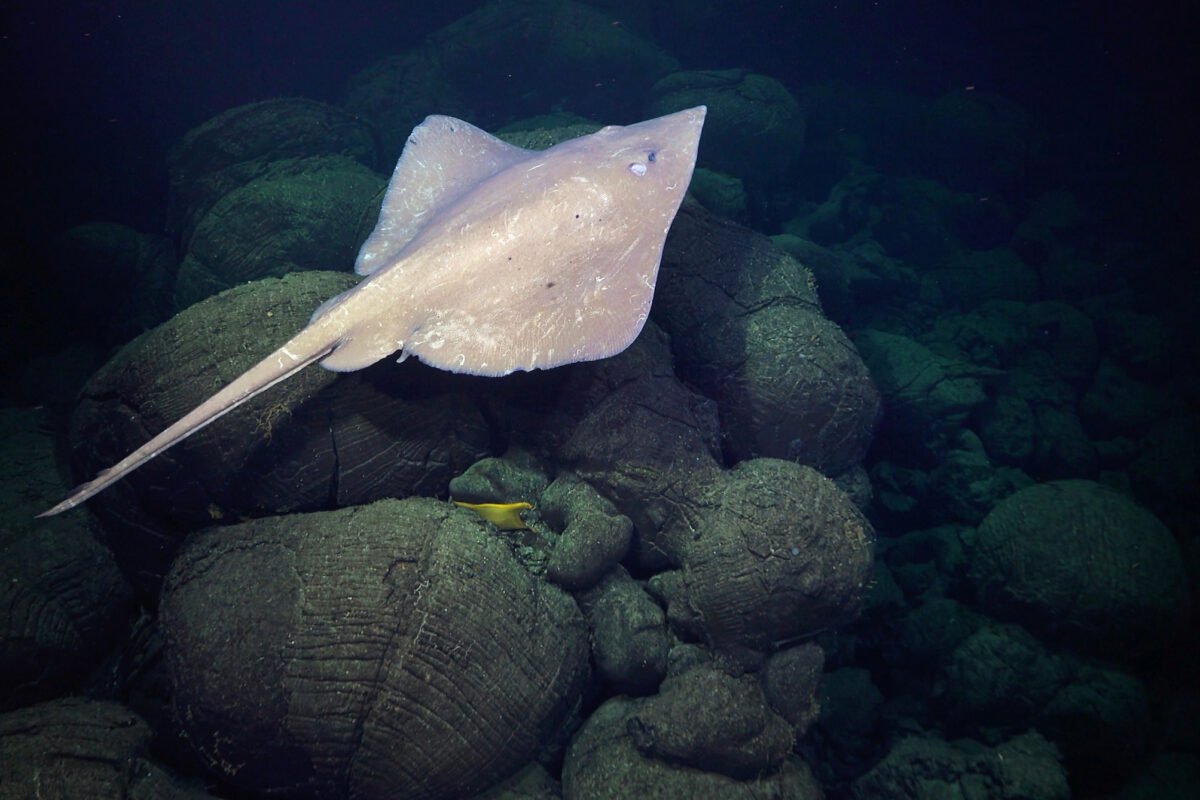
Emily Jeffers, a senior attorney at the Center for Biological Diversity (CBD), a nonprofit based in Tucson, Arizona, said TMC will also likely struggle to prove that its operations won’t harm the environment, which could lead to significant roadblocks and open the door to possible litigation. The CBD sued the U.S. government in 2015 for approving Lockheed Martin’s deep-sea mining plans via the Deep Seabed Hard Mineral Resources Act (DSHMRA), the legal framework that permits the U.S. to authorize mining in international waters. The following year, the CBD reached a settlement with the first Trump administration that required the federal government to conduct an “in-depth analysis of the risks to wildlife and underwater ecosystems” before approving any mining. Thus far, Lockheed Martin has not done any exploratory mining, according to a U.S. government publication, despite holding two active licenses via DSHMRA. However, Frank St. John, Lockheed Martin’s chief operating officer, recently told the Financial Times that the company was in the “early stages of conversations with several companies” about providing them access to its licenses areas and permission to process the materials within them. Lockheed Martin did not respond to Mongabay’s request for comment.
“It’s an old law, but it does have real teeth,” Jeffers told Mongabay, referring to DSHMRA. “It says you can’t do anything that’s going to result in an adverse effect on the environment, and that’s pretty clear in the statute. And I don’t think anyone — no scientist worth their salt — is going to say, ‘Yes, you can mine the deep ocean and it won’t have significant adverse effects.’”
While TMC has recently gotten some big investments and new shareholders, the company’s financial reports indicate that such funding is not optional — it’s vital. The company’s 2024 annual report shows that it lost $81.9 million, and that most of its income came from selling stock or acquiring loans, while only holding $3.5 million in cash. With the company continuing to burn through cash in 2025 — $20.6 million in the first quarter of 2025 alone — it is relying heavily on continued investment. TMC did not comment on these findings.
A report published by the short-seller research firm Iceberg Research on May 27 also notes that TMC has thus far failed to submit a pre-feasibility study to the ISA, despite promising to deliver one for nearly four years. This essential document should project the technical viability, estimated cost and risks associated with TMC’s proposed deep-sea mining operations, according to the short-selling firm. Iceberg also indicated that TMC continues to rely on an “initial assessment” published in 2021, which Iceberg calls “wildly optimistic” since it shows that the EBITDA margins — an indicator of profitability — of one of its concessions would surpass those of Microsoft, which makes tens of billions of dollars each year.
TMC did not respond to Mongabay’s questions about Iceberg’s findings. However, in a May 28 post on X, Barron said the Iceberg report is full of “apples-to-kiwis comparisons which hold no relevance to the economic reality” of the company’s proposed activities. Barron also said that the company would be sharing its pre-feasibility report in the third quarter of this year.
The Iceberg report notes that another deep-sea mining company — the now-defunct Nautilus Minerals, which stirred up environmental, financial and social controversy — similarly failed to publish a pre-feasibility study. The report also suggests that both companies have underestimated their operating costs while overestimating their potential profits. This led Arnaud Vagner, a financial analyst, director of Iceberg Research and author of the report, to say that TMC is “exactly a repeat of Nautilus.”
TMC did not respond to questions about its relationship to Nautilus. In its statement to Mongabay, however, TMC said that it was “not a remake of anything,” but is instead a “first of its kind: a U.S.-regulated deep-sea minerals project designed from day one with environmental protection and benefit-sharing in mind.”
The ghost of Nautilus past
Like TMC, Nautilus was a company with grand ambitions to mine the deep seabed, and promoted a similarly glossy narrative about the environmental and economic benefits its operations could bring. For instance, in a graphics-heavy annual report from 2007, a quote from Nautilus’s then-chief operating officer, Tony O’Sullivan, claimed the company would “find a better way to produce copper, zinc and gold, with less impact on the environment” and would “change the mining industry.” In 2019, however, the company went bankrupt, having lost millions of dollars without ever starting commercial mining, while allegedly leaving the Papua New Guinea government, which had invested in Nautilus’s project, with financial losses and reportedly causing environmental damage. O’Sullivan now works for TMC, acting as the company’s chief development officer since 2017.
Yet TMC’s connection to Nautilus goes beyond O’Sullivan’s involvement. According to Wired, it actually started with David Heydon, an Australian geologist, former prospector, and tennis buddy of Barron’s. In 2002, Heydon teamed up with his old university friend Julian Malnic, an erstwhile mining journalist and editor, also from Australia, who’d obtained exploratory rights to the seafloor off the Papua New Guinea (PNG) coast, known to harbor copper, gold, silver and zinc, in 1997. Heydon helped Malnic establish Nautilus in Canada and take it public on the Toronto and London stock exchanges, raising $300 million for its operations before leaving the company in 2008. Heydon did not respond to Mongabay’s request for comment, but Malnic confirmed his and Heydon’s partnership.
Barron himself was an investor in Nautilus, a fact he promotes on his LinkedIn page, and reportedly sold his own Nautilus shares for more than $30 million.
Then, in 2011, Heydon set up a new deep-sea mining company in Vancouver — the firm now known as TMC, although back then it was called DeepGreen Resources. Heydon’s son, Robert, also joined the new company. Before assuming the role of CEO in 2017, Barron provided early financing to DeepGreen, including an $8 million equity investment from Windward Prospects, a U.K.-based environmental remediation company that went into administration — a debt protection process — while Barron served as a director. Barron did not comment on his role at Windward or the company’s investment in DeepGreen.
Besides helping the company get started, Barron holds a significant stake in TMC, currently about 5.7% of its shares, according to a company filing. Barron also has an annual salary of $750,000, and is eligible for a hefty annual bonus, up to 75% of his salary, if the company meets targets set by the board.
The formation of TMC marked a return to deep-sea mining by individuals who had founded Nautilus Minerals. Now, several of these same players are involved in a new company, American Metal, incorporated in Texas in February 2025. The company is being led by the Heydons, and at least four other former Nautilus Minerals personnel are featured on its website. According to the website, the company aims to target nodules to “provide a sustainable and reliable supply of critical minerals for the U.S.” and pledges to operate “in adherence with world’s best environmental practice, and in a manner that prioritizes environmental protection.”
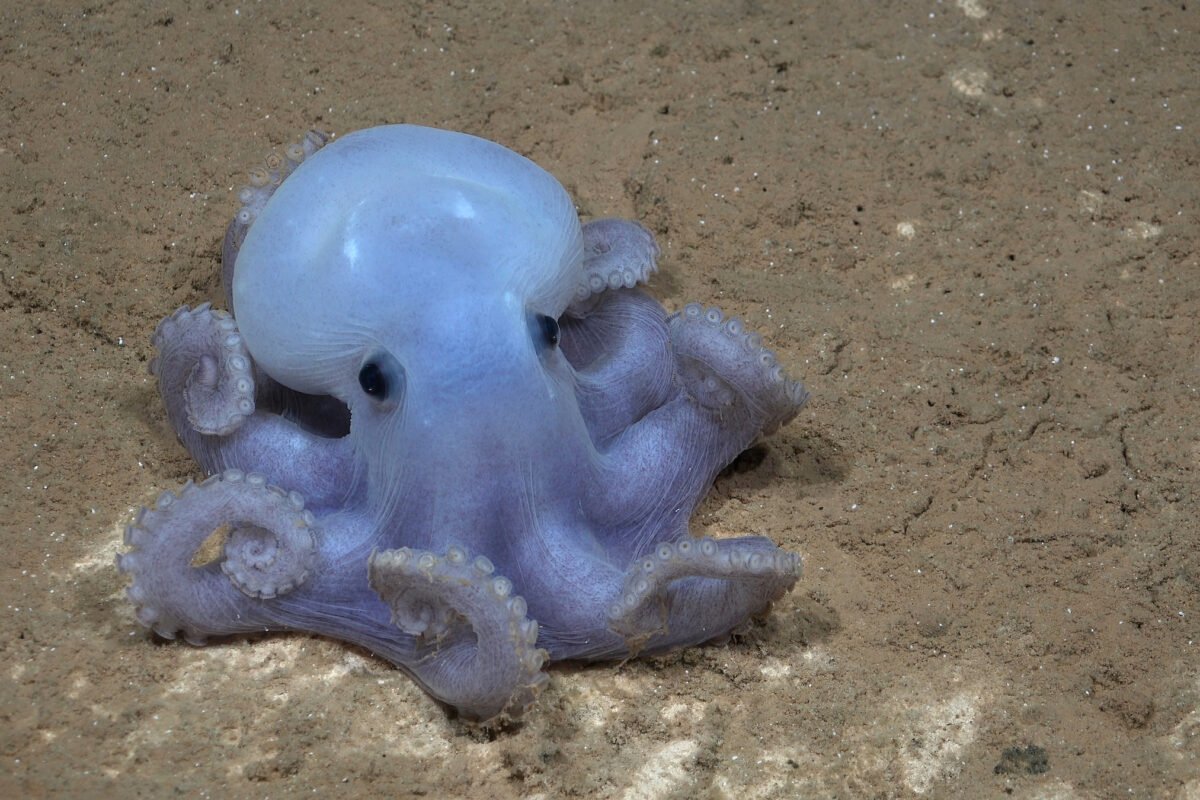
TMC is also connected to Deep Sea Mining Finance (DSMF), a company incorporated in the British Virgin Islands that in 2024 took part in a controversial exploratory mining operation off the coast of Papua New Guinea — the same area that Nautilus once targeted. This operation appeared to take some PNG mining regulators by surprise, and some environmentalists alleged that it violated the terms of the license DSMF had obtained from Nautilus. However, the joint venture through which DSMF operates in PNG asserts on its website that this operation was “permitted under Papua New Guinea’s regulatory requirements.” Mongabay recently reported that DSMF is still pursuing deep-sea mining in PNG through a company called Nautilus Minerals Niugini, which was a subsidiary of the long-bankrupt Nautilus Minerals — despite Prime Minister James Marape’s clear opposition. In June, Prime Minister Marape told Mongabay the country is investigating these activities.
In fact, DSMF was created by two of Nautilus’s largest shareholders, according to a 2017 Nautilus press release. One was MB Holding Company LLC, owned by an Omani business family. The other was Metalloinvest, a subsidiary of the Russian mining firm USM Holdings, both of which have been sanctioned by the U.S. and U.K. Furthermore, according to Bloomberg, USM Holdings is partly owned by Alisher Usmanov, a Russian-Uzbek businessman sanctioned by countries such as the U.S., U.K. and Canada, as well as the European Union. A spokesperson from Usmanov’s press service, who declined to be named, told Mongabay that neither Usmanov nor any of his companies “have any interest or ownership in DSMF or TMC,” and that Usmanov has stepped away from business to focus on philanthropy.
In 2017, DSMF began issuing short-term loans to Nautilus, not long after the company reported a $10 million loss from a cyberattack it told the SEC an “unknown third party” had carried out. When Nautilus went bankrupt, DSMF acquired all of its assets, including an exploratory mining license for the CCZ held by its subsidiary TOML. Meanwhile, the PNG government was saddled with about $120 million in debt. Locals claim the operation caused significant environmental damage, including fish deaths and whale strandings.
Nautilus founder Malnic acknowledged “the monumental failure of the Nautilus company,” in an email to Mongabay. “But this has little to do with the viability of marine resources which are fundamentally preferable to terrestrial mining operations — economically and environmentally,” he wrote. “This is the most environmentally preferred method of mining there is.”
In 2020, TMC acquired TOML and its license from DSMF in exchange for $4 million in cash and 7.8 million TMC shares, cementing a financial link between the two firms. Around the same time, two of DSMF’s British Virgin Islands (BVI) holdings were transferred to TMC, establishing part of TMC’s presence in the BVI, a jurisdiction known for its secrecy in corporate filing matters. The TOML sale prompted a two-year SEC investigation into the financial transaction, but in May 2024, TMC announced that the SEC had concluded its investigation and did not intend to enforce any action against the company.
DSMF historically held approximately 4.6% equity in TMC, according to the website of Mawarid Mining, a subsidiary of MB Holding Company, which also states that Mawarid owns about half of DSMF. Chris Jordinson, Mawarid’s CEO who serves on DSMF’s board of directors, confirmed this figure to Mongabay — but he said that DSMF’s equity interest in TMC is now less than 4.6% since DSMF has not participated in TMC’s raisings. He did not specify the amount of equity DSMF still holds.
TMC declined to comment on these findings or its relationship with DSMF. Jordinson also did not comment on the specifics of DSMF’s relationship with TMC.
Under assessment
With TMC’s application pending with NOAA, the company is now facing growing regulatory scrutiny on several fronts. At its meeting this month, the ISA Council decided to examine whether contractors, which include TMC and its partners, may have breached the terms of their ISA-issued contracts. And NOAA is required to thoroughly assess all applicants — which includes TMC — according to Kimberly Rodgers of NOAA’s National Ocean Service Public Affairs.
In an email to Mongabay, Rodgers said that DSHMRA and its implementing regulations “require NOAA to assess, among other things, the financial and technological capacity of applicants to conduct the activities proposed in their applications as part of the determination to issue a license or permit.” However, Rodgers did not respond to Mongabay’s question about whether NOAA was currently assessing TMC, or the nature of any findings.
Whatever the outcome of these inquires, it’s clear that deep-sea mining has substantial backing from the current U.S. government. While no U.S. politician has publicly endorsed TMC specifically, many have expressed support for the deep-sea mining industry more broadly. At an oversight hearing held by a subcommittee of the House Natural Resources Committee on April 29, Republican Congressman Paul Gosar from Arizona said that “harvesting minerals found in abundance on the sea floor, both in U.S.-controlled and international areas, can significantly help America buck the supply chain yoke placed on us by China and reestablish mineral independence.”
However, Jared Huffman, a Democratic congressman from California and ranking member of the House Natural Resources Committee, expressed a different view. He said seabed mining raises “serious red flags,” and that areas of concern range from “the potential misuse of taxpayer dollars, to the lack of clarity around where these minerals will end up, to the unknown and potentially irreversible environmental impacts.”
“Right now, the Trump administration process feels like a black box: there’s limited information, limited oversight, and far too much room for industry influence,” Huffman told Mongabay in an emailed statement. “Before the administration moves forward, we need full transparency, a strong regulatory framework, and a clear demonstration that this is in the public interest — not just in the interest of a few well-connected companies.”
Elizabeth Claire Alberts is a senior staff writer for Mongabay and a fellow with the Pulitzer Center’s Ocean Reporting Network. Find her on Bluesky and LinkedIn.
Additional reporting from Kara Fox, a senior reporter at CNN International, and freelance journalist Diogo Augusto.
Banner image by Emilie Languedoc/Mongabay.
Citations:
Rabone, M., Wiethase, J. H., Simon-Lledó, E., Emery, A. M., Jones, D. O., Dahlgren, T. G., … Glover, A. G. (2023). How many metazoan species live in the world’s largest mineral exploration region? Current Biology, 33(12), 2383-2396.e5. doi:10.1016/j.cub.2023.04.052
Vanreusel, A., Hilario, A., Ribeiro, P. A., Menot, L., & Arbizu, P. M. (2016). Threatened by mining, polymetallic nodules are required to preserve abyssal epifauna. Scientific Reports, 6(1). doi:10.1038/srep26808
Thomas, E. A., Molloy, A., Hanson, N. B., Böhm, M., Seddon, M., & Sigwart, J. D. (2021). A global red list for hydrothermal vent molluscs. Frontiers in Marine Science, 8. doi:10.3389/fmars.2021.713022
Smith, C. R., Tunnicliffe, V., Colaço, A., Drazen, J. C., Gollner, S., Levin, L. A., … Amon, D. J. (2020). Deep-sea misconceptions cause underestimation of seabed-mining impacts. Trends in Ecology & Evolution, 35(10), 853-857. doi:10.1016/j.tree.2020.07.002
Drazen, J. C., Smith, C. R., Gjerde, K. M., Haddock, S. H., Carter, G. S., Choy, C. A., … Yamamoto, H. (2020). Midwater ecosystems must be considered when evaluating environmental risks of deep-sea mining. Proceedings of the National Academy of Sciences, 117(30), 17455-17460. doi:10.1073/pnas.2011914117
Jones, D. O., Arias, M. B., Van Audenhaege, L., Blackbird, S., Boolukos, C., Bribiesca-Contreras, G., … Glover, A. G. (2025). Long-term impact and biological recovery in a deep-sea mining track. Nature, 642(8066), 112-118. doi:10.1038/s41586-025-08921-3


